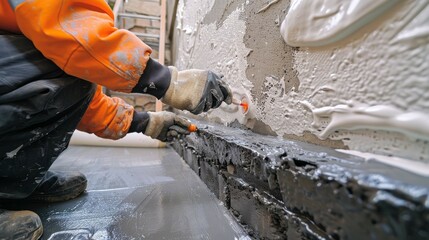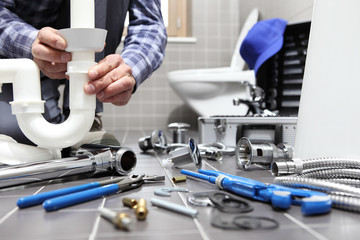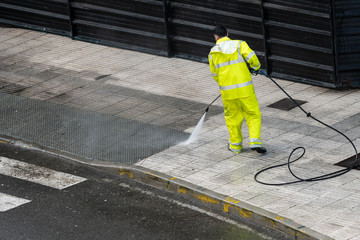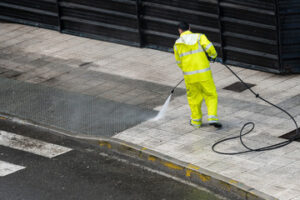Foundation problems are not something that should be ignored. Early repairs can prevent costly repair bills in the future and keep your home safe.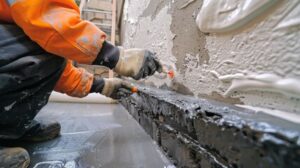
During the foundation repair process, your contractors will install support underneath your home. These supports are called piers or pilings. They are installed by digging and drilling holes, then either pouring concrete for piers or driving pre-formed pieces into the ground for pilings (also known as pressed piles). Visit Website to learn more.
After the piers are in place, your contractor will raise your home to its original elevation. Small cracks will likely form as your home settles back into place, but these are normal and can be repaired with caulk or putty.
Whether you’re dealing with hairline cracks or expansive, stair-step ones, they should always be addressed as soon as you see them. Cracks in your foundation are warning signs of potential structural issues, and if they’re left untreated, they can continue to worsen over time. It’s important to have them repaired as quickly and thoroughly as possible to prevent water from getting into your home, which can lead to mold growth, wood rot, and other serious problems.
Repairing cracks is usually a simple process that involves patching and sealing the affected areas. Crack sealers are available in a variety of different formulas, including silicone, polyurethane, and latex concrete caulking, and they’re designed to help keep moisture out of the walls. Using a caulking gun, you can apply the crack sealer along the entire length of the crack to ensure that it’s completely sealed. Once the cracks have been patched and sealed, it’s a good idea to apply a waterproof masonry sealer over the entire area to further protect your foundation from moisture infiltration.
If you’re concerned about any cracks in your foundation, the first step is to contact a professional to assess the situation and recommend the appropriate repairs. They will take several factors into consideration, such as the location of the cracks, their width and length, and whether they’re accompanied by other symptoms like deflection or bulging. It’s also important to choose a contractor with experience working in your local climate and soil conditions, as they’ll be able to offer more effective solutions.
A common type of foundation crack is a horizontal crack that runs parallel to the foundation. These cracks are often caused by settlement and should be assessed by a professional immediately. They may also be the result of poor drainage, causing a build-up of hydrostatic pressure. Depending on the extent of the damage, professionals can use repair methods such as epoxy injection, carbon fiber straps, and steel I-beams to stabilize the foundation.
Wider cracks that form in a stair-step pattern are a more significant problem and require immediate attention. They may indicate a major structural shift, requiring substantial repair work. They’re also more likely to lead to secondary problems, such as doors and windows that stick or don’t open properly.
Leaks
Whether it’s due to natural settling or excessive shifts in the soil beneath your home, small leaks can quickly get worse. It’s crucial to catch these early warning signs and address them before they get out of hand. Leaks in the foundation can lead to serious structural damage, and they can also create an ideal environment for mold and mildew to take hold.
Moisture is the number one cause of cracks in foundation walls. Water leaking through these cracks puts hydrostatic pressure on the foundation, causing it to slowly expand and contract. This can make the cracks even larger over time, and it can also lead to rotting wood and weakening of structural supports.
The first sign of a leak is often damp or musty areas in the basement or lower floors of your home. This is because moisture from the leaks seeps through these cracks and into your home, creating a damp, musty environment that can lead to mold and mildew issues. The presence of mold and mildew is a good indication that you have a foundation leak, and it’s important to get it fixed right away to prevent further problems.
Another common sign of a foundation leak is water pooling around the foundation. This is because the ground around your house isn’t properly sloped and directed away from the foundation, allowing water to pool against the wall and eventually find a way in through the cracks. A professional can inspect your home’s drainage system and recommend solutions to help prevent this from happening.
The most effective ways to prevent a leak in your foundation include regular inspections and routine maintenance. Make sure that gutters and downspouts are clear of debris to avoid overflow and direct water away from the foundation, and keep trees and shrubbery trimmed so they don’t grow too close to your foundation. In addition, a professional can inspect the foundation to determine its stability and recommend any necessary repairs to ensure that it is safe and secure for years to come. Depending on the severity of the leak and the root cause, professional solutions can range from simple crack sealing to more advanced methods like foundation piering or drainage systems.
Structural Damage
The structural integrity of your home depends on its foundation, so it’s important to monitor cracks and other warning signs for damage. However, some types of damage are less obvious than others. A common problem is soil settlement, which happens when the ground shifts significantly underneath your house. This can lead to a range of problems, including leaning chimneys and uneven floors. It’s especially important to catch this type of problem early, so regular maintenance and timely intervention are critical.
In many cases, structural damage can be repaired with foundation support systems that transfer the weight of your home to stable soil. For example, carbon fiber straps can be used to reinforce a foundation wall and prevent it from bowing or leaning. Another option is wall plate anchors, which are designed to transfer the weight of your foundation walls to a reinforced earth bed, helping to stabilize and strengthen your foundation.
Another major reason to repair structural damage is to restore your home’s original elevation. When your foundation sinks or settles, it can affect and damage other parts of your home, including doors, windows, and trim. Foundation repair can correct these issues and return your home to its original position, restoring its functionality.
Foundation repair can also be used to address moisture-related problems, such as leaks and water damage. If your foundation is leaking, it’s important to fix the problem as quickly as possible to prevent further damage and reduce the risk of mold growth.
A professional will conduct a thorough inspection of your foundation and the surrounding soil. They’ll identify any areas where repairs are needed and recommend the best solution. For small cracks, a waterproofing material may be sufficient, while larger cracks may require excavation and replacement of your foundation walls. In some cases, a professional will suggest installing drainage systems, such as French drains or sump pumps, to manage surface water and prevent it from pooling near your foundation.
When a foundation is replaced, it’s a very extensive and expensive project. Not only does it involve digging and drilling beneath your home, but it also requires removing everything that’s located on top of the soil, such as gardens, bushes, sidewalks, patios, and driveways. This process can be extremely disruptive and damaging to landscaping.
Underpinning
Foundation underpinning is a construction technique that improves the stability of an existing structure by extending the foundation either in depth or width. This helps distribute the weight of the building more evenly to prevent structural damage due to soil movement or increased load-bearing requirements.
Underpinning is a great option for homeowners and businesses with issues related to differential settlement. If left untreated, this type of problem can lead to serious structural problems throughout the property, so it is essential that homeowners and business owners consult a foundation repair contractor as soon as possible.
Signs of differential settlement include doors and windows that won’t open or shut correctly, uneven floors, and walls and ceilings separating slightly from the foundation. While these signs may seem minor, they can actually be a clear indication of a serious problem with the foundation.
Differential settlement is most often caused by a combination of factors. For example, unexpected heavy rains can wash away protective layers of soil around or underneath the house allowing water intrusion and accelerating settling. Incorrect or unfinished plumbing can also allow moisture into the home, causing foundation cracks and other structural issues.
Another cause of differential settlement is soil erosion or compaction. This can occur for a variety of reasons, including poor drainage, tree roots, or inadequate construction during the original build.
When a foundation is underpinned, long steel piers are driven beneath the foundation, lifting it back to its original level. This repairs the damage to the foundation and to the rest of the house, strengthens it, and stops further damage.
There are several types of underpinning techniques available, each designed to address specific issues and conditions. The most common method is push piers, which are installed by driving them into the ground until they reach stable ground. This technique is effective for both commercial and residential properties. Other options for underpinning include helical piers, drilled concrete piers, and driven piles (timber, steel, or concrete). The right underpinning solution depends on the specific needs of your building.
